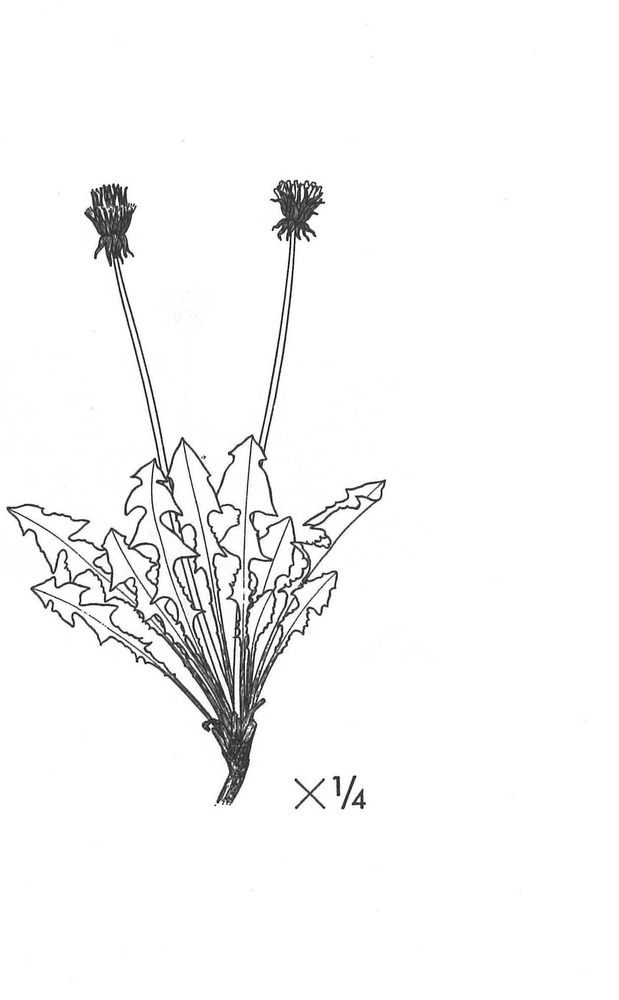| Taraxacum officinile Weber | |||
| |||
| Family | Compositae — APG family: Asteraceae | ||
| Description | Leaves subentire, sinuate-dentate or variously pinnatifid, the lobes mostly toothed; heads large, up to 5 cm broad; ligules orange to yellow; involucral bracts lacking horns or tubercles below apex, the outer lanceolate to linear, more or less spreading or reflexed; achenes olivaceous, the body 3.5-4 mm long with slender beak, 2.5-4 times as long as body, variously tuberculate-spinulose; pappus white. | ||
| Ecology | Waste places, roadsides. Described from western Europe. | ||
| Taxonomy notes | An aggregate species comprising numerous mostly apomictic microspecies. The most widespread of these within the area of interest is T. vagans Hagl., with narrow outer involucral bracts about 2 mm broad; others are T. Dahlstédtii Lindb. f., T. unduldtum Lindb. f. & Markl., and T. retrofléxum Lindb. f., all introduced from Europe. |
This is a digital representation of Eric Hultén’s ‘Flora of Alaska and Neighboring Territories: A Manual of the Vascular Plants’, which was published by Stanford University Press in 1968. The book was digitized by C. Webb (at UAMN) as part of the Flora of Alaska project, with funding by the US NSF (Grant 1759964 to Ickert-Bond & Webb), and with permission of Stanford University Press. Data and images © 1968 Board of Trustees of the Leland Stanford Jr. Univ. Usage licence: Creative Commons BY-NC-SA 4.0. NB: You may find OCR errors; please refer to the hard-copy if in doubt.
